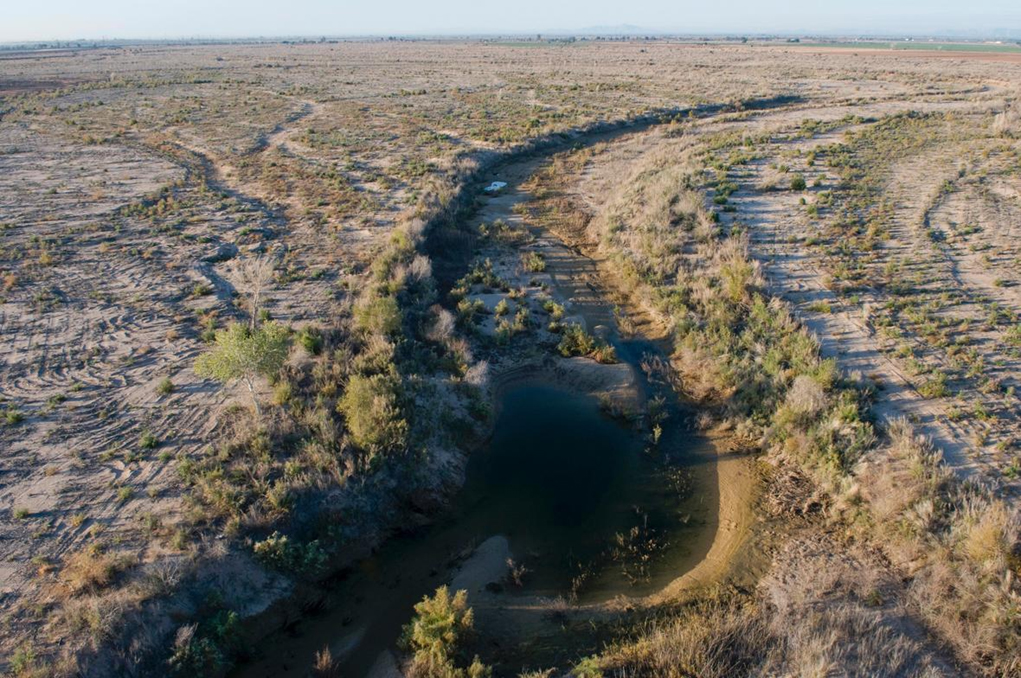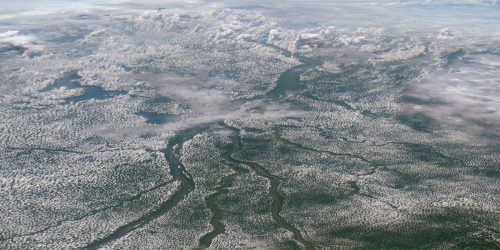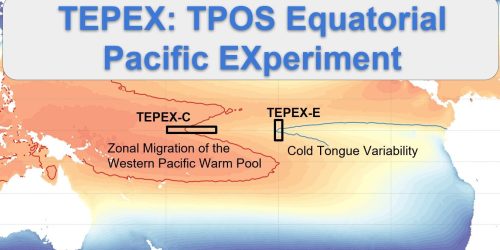The Climate Program Office’s Modeling, Analysis, Predictions, and Projections (MAPP) Program, in collaboration with the National Integrated Drought Information system (NIDIS) program is announcing 11 new 3-year projects in Fiscal Year 2020 (FY20) that aim to advance our capability to more integrally characterize and anticipate U.S. droughts in the context of hydroclimatic variability and change, linking this research to practical NIDIS applications. The competitively-selected projects total $5,688,495, including $5,173,423 in grants and $515,072 in other awards.

Droughts are the result of chains of complex interactions that involve natural and human systems, and as these systems evolve the face of drought may change in ways we don’t understand and anticipate. For example, drought conditions can favor wildfire occurrence, and in turn, fire occurrence can affect snowpack, hydrology, and air quality. Snowpack and hydrology can affect air quality, which can affect clouds and precipitation. Long-term surface temperature increases also influence such processes.
In order to fully characterize droughts and predict their general evolution and specific stakeholder-relevant thresholds, it is increasingly important that we capture the array of complex interactions which may intervene in U.S. droughts—considering processes across timescales, spatial scales and disciplines, and linking both natural and human-induced effects. Research is needed to advance our understanding of how climate affects drought processes. In addition, we need to know the relevant processes and feedbacks, and link this understanding to a more integrated characterization of droughts and improved probabilistic predictions from seasons to decades. The 11 new projects will help meet these research and information needs and build new cutting-edge capabilities.
A Drought Task Force composed of the funded investigators will be led by Rong Fu (UCLA), Andrew Hoell (NOAA Earth System Research Laboratories/Physical Sciences Laboratory), Justin Mankin (Dartmouth University), and Isla Simpson (National Center for Atmospheric Research). Since 2011, past iterations of NOAA’s Drought Task Force, organized by the MAPP Program in partnership with NIDIS, have catalyzed community research aimed at improving national and regional drought capabilities. First authorized in 2006 and reauthorized in 2013 and 2018, NDIS is a multi-agency partnership that coordinates drought monitoring, forecasting, planning, and information at national, state, and local levels across the country. NIDIS aims to help the nation move to a more proactive approach to understanding and managing drought risks and impacts, and improve long-term drought resilience.
The Drought Task Force has focused on supporting NIDIS and its Drought Early Warning Systems via advances in the understanding, monitoring, and prediction of drought, and has produced critical information, knowledge, and capabilities supporting NIDIS’s mission. In FY20, this fourth iteration of the Drought Task Force will continue to support NIDIS’s development through a new set of activities that will focus on emerging priorities, creating collaborations between the projects, entraining the science being conducted under this funding initiative into NOAA, and applying science to ongoing and emerging droughts.
The 11 new projects include:
- Combined land and ocean drivers of U.S. drought determined from information theoretic evaluation of observations and coupled models
The project has three objectives: (1) characterize the roles of ocean and land in drought by examining the coupled processes each have with the atmosphere in a systems approach using established metrics, updated with techniques from information theory that minimize arbitrary assumptions; (2) diagnose operational and research models that currently provide subseasonal forecasts, portraying their coupled ocean-land-atmosphere performance, and potentially attributing drought forecast skill to specific model behaviors; (3) specifically apply and diagnose the behavior of the Unified Forecast System in the area of drought prediction, including sensitivity studies to isolate drivers.- PI: Paul Dirmeyer, Center for Ocean-Land-Atmosphere Studies at George Mason University
- Co-PIs: Bohua Huang, Center for Ocean-Land-Atmosphere Studies at George Mason University; Chul-Su Shin, Center for Ocean-Land-Atmosphere Studies at George Mason University
- Identify alternatives to snow-based streamflow predictions to advance future drought predictability
This project aims to develop and evaluate new techniques for drought prediction that will suit the needs of western U.S. water management entities, considering regional characteristics and shifts to a warmer, less snow-dominated future climate.- PI: Ben Livneh; University of Colorado Boulder; Civil, Environmental and Architectural Engineering; CIRES
- Co-PIs: Joseph Kasprzyk, University of Colorado Boulder; Civil, Environmental and Architectural Engineering; Benet Duncan, University of Colorado Boulder, CIRES
- Advance understanding of drought prediction from environmental stressors
This project will analyze cases of North American droughts from the satellite era, then (a) examine whether they evolved as characterized by drought outlook monitors, and (b) identify the possible positive or negative feedbacks from vegetation response to climate conditions.- PI: Ian Baker, Colorado State University Cooperative Institute for Research in the Atmosphere
- Co-PIs: Lori Bruhwiler, NOAA Global Monitoring Laboratory; Aleya Kaushik, University of Colorado Boulder CIRES
- Improve understanding of the interacting factors that influence the evolution and severity of U.S. droughts in present and future climates
This project will fully characterize the role of land-atmosphere coupling processes in governing drought severity. Capitalizing on recent land- and atmosphere-model improvements, the research team will use a constrained circulation ensemble approach to systematically quantify how the inclusion of a variety of land-atmosphere processes impact on the evolution and severity of drought events and how we expect these impacts to change in a warmer climate.- PI: Isla Simpson, National Center for Atmospheric Research
- Co-PI: David Lawrence, National Center for Atmospheric Research
- A probabilistic characterization of the interaction between large-scale atmosphere, land surface, and fire to enable improvement of drought early warnings over the Great Plains and California
This project will characterize and understand the integral effect of the coupling between atmosphere, land surface, and fire-generated aerosols on drought triggers and persistence for a seasonal scale, and its interannual and decadal variability over the Great Plains and California.- PI: Rong Fu, UCLA
- Causes of multi-year droughts in the Missouri River Basin
This project will clarify whether the monitored states of the ocean and land surface can offer early warning for the likelihood of first-year droughts becoming multi-year events in the Missouri River Basin, thereby furthering our predictive understanding of the region’s hydroclimate.- PI: Andrew Hoell, NOAA Physical Sciences Laboratory
- Co-PI: Martin Hoerling, NOAA Physical Sciences Laboratory
- Understanding the mechanisms leading to early warning of meteorological and hydrological drought in the U.S. Caribbean
This project will provide critical monitoring and drought early warning improvements in the U.S. Caribbean islands with limited water resources for human populations, unique drought-vulnerable ecosystems, and a recent history of economic hardship and natural hazards–including a major drought in 2015.- PI: Thomas Mote, University of Georgia
- Co-PIs: Grizelle Gonzalez, USDA Forest Service; Paul Miller, Louisiana State University; Craig Ramseyer, Virginia Tech
- Droughts in Hawai’i and the U.S Pacific Islands: a framework to understand processes and feedbacks, assess predictability, and reduce uncertainties
The overarching goal of this project is to work towards the development of a Drought Early Warning System in the Pacific and contribute to the Drought Task Force. To accomplish this goal, the project objectives are: (i) based on specific stakeholder-relevant thresholds, study characteristics of severe and prolonged droughts from a multitude of observations and reanalysis products; (ii) assess the predictability of drought life cycle, and develop a robust system for drought monitoring; and (iii) work closely with various regional stakeholders and the National Integrated Drought Information System (NIDIS), and link the research results to improve drought prediction.- PI: H. Annamalai, University of Hawai’i International Pacific Research Center
- Co-PIs: Arun Kumar, Climate Prediction Center NCEP NOAA; John Marra, NOAA NCEI
- Regional influences of vegetation on complex droughts in North America
This project will focus on trace vegetation-drought feedbacks and how these complex interactions shaped previous drought characteristics and influenced their predictability. It will also quantify what role, if any, vegetation played in the onset, evolution, and termination of historical severe seasonal-to-interannual droughts. This project will use the latest generation of coupled Earth-system models from CMIP6, along with insights gleaned from historical analysis to characterize the influence of vegetation-drought interactions on future North American drought risks.- PI: Justin Mankin, Dartmouth College
- Co-PIs: Jason Smerdon, Lamont-Doherty Earth Observatory; Richard Seager, Lamont-Doherty Earth Observatory
- Observed and modeled interactions between droughts and heat waves for the Northeastern United States
The goal of this project is to understand the interactions between droughts and heat waves, and assess current model skill in simulating and predicting these phenomena and their interactions. This project will use machine learning and moisture tracking techniques to objectively identify and classify these events into various “types” based on daily circulation data, as a foundation for dynamically-based investigation. These results will then be used as a basis for assessing the predictability of the relationships and the ability of current climate models to reproduce the relationships.- PI: Matthew Barlow, University of Massachusetts, Lowell
- Co-PI: Christopher Skinner, University of Massachusetts, Lowell
- Disentangling complex interactions and feedbacks among droughts, fires, and snowpack in the Western U.S. by integrating observations and models
The project goal is to disentangle and quantify the complex interactions and feedbacks among droughts, fires, and snowpack in the Western U.S. by integrating observations and models to improve predictions and projections of drought characteristics and impacts.- PI: Cenlin He, National Center for Atmospheric Research
- Co-PIs: Michael Barlage, NOAA NWS Environmental Modeling Center; Fei Chen, University Corporation for Atmospheric Research
- Unfunded Collaborator: Wenfu Tang, National Center for Atmospheric Research









